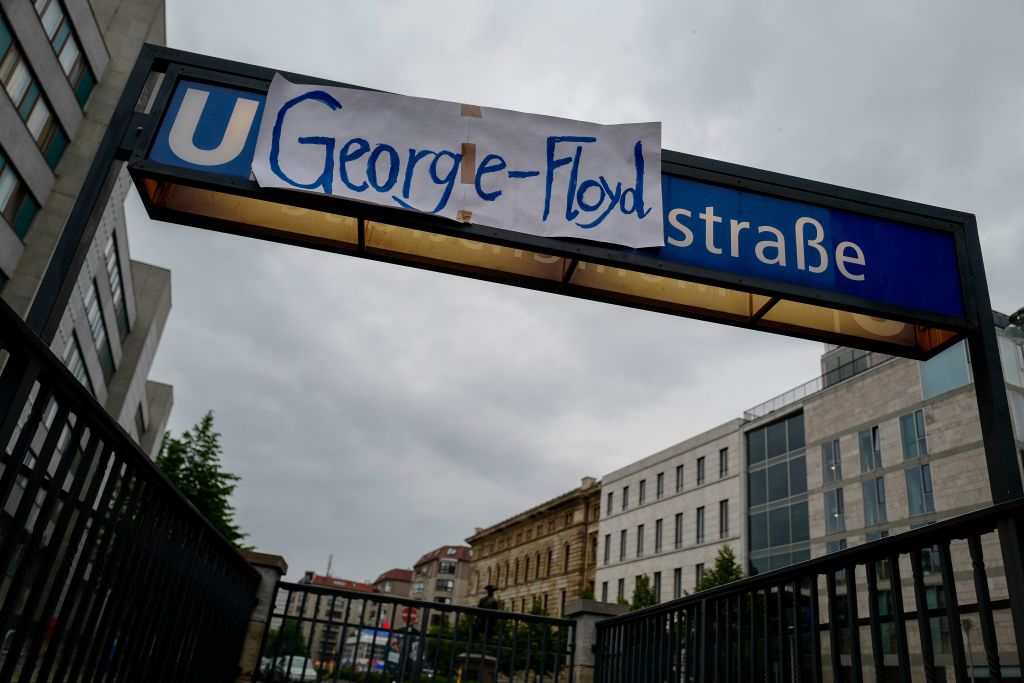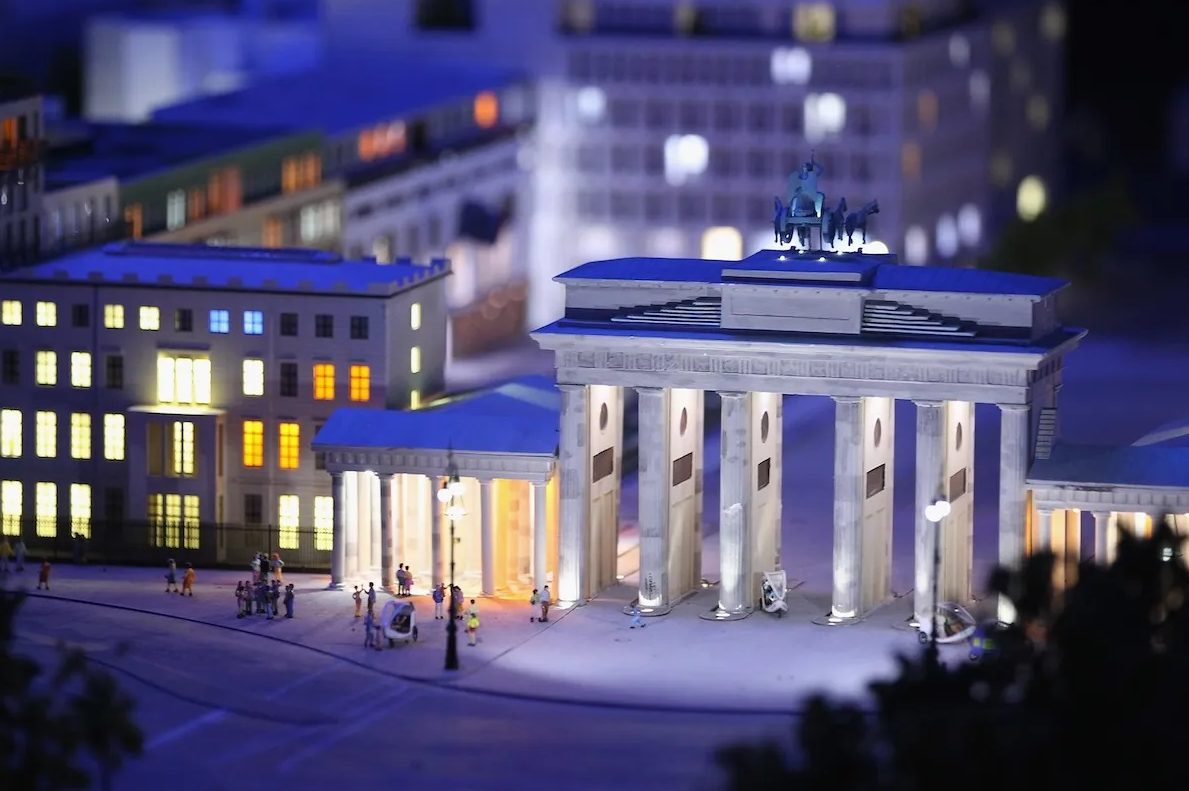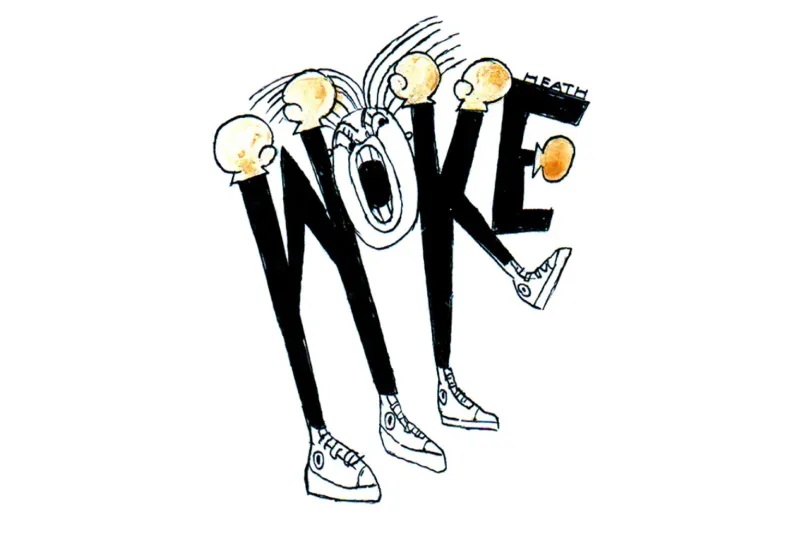By the time I got to Mohrenstrasse, the protesters and their BLM placards were long gone. The only thing they’d left behind was some red paint, splattered on the sign above the subway station. I guess this was meant to imply that by naming this U-Bahn station Mohrenstrasse, Berlin’s public transport bigwigs had blood on their hands, or something. But today, in the pale fall sunlight, it actually looked rather attractive and artistic. I hope they keep it there.
For this subway sign to remain here, albeit with a light splattering of red paint upon it, would, to my mind, be a good solution to a problem that’s dogged Berlin’s U-Bahn network for years: namely, how to tackle the protesters who claim that the name Mohrenstrasse (Street of the Moors) is racist.
Yet maintaining this historic name is no longer a long-term option, for Berlin has now bowed to pressure from anti-colonial activists, and decided to rename the street from which this station takes its name. Mohrenstrasse will be renamed Anton-Wilhelm-Amo-Strasse, after Germany’s first black philosopher. Welcome to the latest battleground in Germany’s culture wars.
The renaming of Mohrenstrasse is a rich irony, for the original name of this city center street was only relatively recently reinstated. During the Cold War, this street was in Communist East Berlin, and the East Germans renamed it Otto Grotewohl Strasse, after East Germany’s first prime minister, a name which became unacceptable after the Berlin Wall came down.
Equally ironic, the Berliner Verkehrsbetriebe, which runs the city’s subway system, had proposed to rename the station Glinkastrasse, after an adjoining street, which commemorates the Russian composer Mikhail Glinka. This plan was scuppered, however, when Glinka was (posthumously) accused of anti-Semitism. And so the search for a suitable name goes on.
I doubt this is the last battle the beleaguered Berliner Verkehrsbetriebe will have to face. At the southern end of the subway network, not far from the former East-West border, is a station called Onkel Toms Hütte, named after Uncle Tom’s Cabin, Harriet Beecher Stowe’s great anti-slavery novel, which nonetheless spawned terms for African Americans which many now find pejorative. How long before campaigners turn their attentions here?
Meanwhile, German anti-colonial activists are toasting their latest victory in this kulturkampf, a peculiarly Teutonic version of Britain’s current squabbles over stately homes and statues. Germany’s Social Democratic party called it ‘a milestone’ and Mnyaka Sururu, spokesperson of the Berlin Postkolonial Initiative, said ‘Berlin is banishing an insult from the city.’
But is it really? While the word Mohren is generally seen as rather old-fashioned here in Germany, it’s not widely regarded as overtly racist. Indeed, in the Bavarian town of Coburg, locals faced down similar protests by pointing out that the ‘Moor of Coburg’ on the town’s coat of arms was not a negative portrayal of a person of color, as protesters claimed, but a positive depiction of a Christian martyr, venerated as Coburg’s patron saint.
[special_offer]
Anton Wilhelm Amo sounds like a thoroughly admirable figure, and if Berlin is going to rename Mohrenstrasse after anyone I suppose it might as well be him. Born in Ghana around 1703, he was abducted by the Dutch West India Company in 1707 and brought to Germany as a child slave, where he ended up in the court of Brunswick-Wolfenbüttel. From there, he rose through the ranks of German academia, acquiring his doctorate in 1729 at the University of Halle. An authority on Descartes, he subsequently taught philosophy, at Halle, Jena and Wittenberg universities. His doctoral thesis, long since lost, was entitled The Rights of Blacks in Europe.
I’d never heard of Anton Wilhelm Amo, I’m glad I have done, and if Berlin hadn’t decided to rename Mohrenstrasse after him, I suppose I might well have remained in ignorance. And yet something in me recoils from renaming streets (or subway stations) after individuals. You would have thought Germany, of all countries, would have had quite enough of this sort of thing, what with all the streets named after Hitler and his henchmen which had to be renamed after the Third Reich; and all the streets named after Stalin and his acolytes which had to be renamed after Reunification. Yesterday’s heroes often become tomorrow’s villains, leading to all sorts of kerfuffles between traditionalists and leftists, lots of extra expense for the local council (and local taxpayers) and lots of extra work for mapmakers and signmakers.
Yet there was a simple solution to the Mohrenstrasse controversy, which a few graffiti artists here in Berlin have deployed, by adding a neat little umlaut to the o in Mohrenstrasse. Mohren is German for Moors. Möhren is German for carrots. What a lot of trouble the authorities could have saved for everyone if they’d renamed this station Carrot Street. Would that have appeased the activists? I doubt it, but at least it would have raised a laugh.
This article was originally published onThe Spectator’s UK website.

























